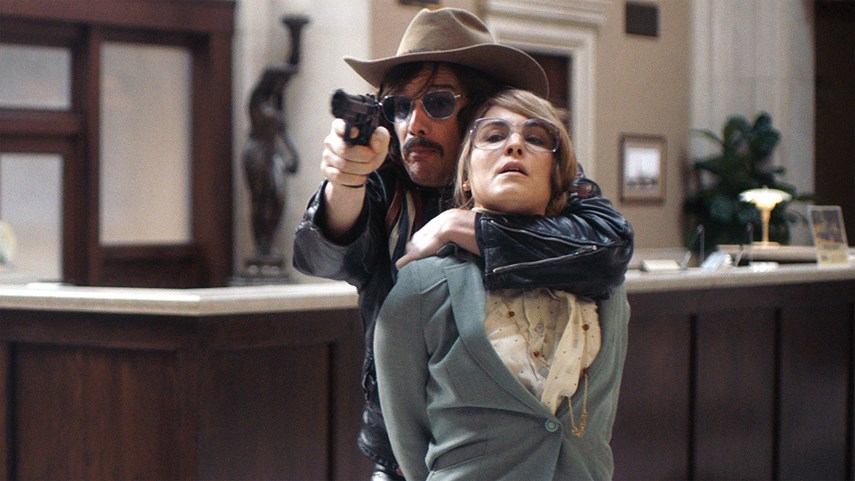Stockholm. Written and directed by Robert Budreau. Starring Ethan Hawke, Noomi Rapace and Mark Strong. Rating: 6 (out of 10)
The syndrome made famous by captive-turned-terrorist Patty Hearst was actually coined just a year before her kidnapping made national headlines, and Robert Budreau’s “absurd but true story” gives an account of it.
Stockholm is about a bank robbery and Sweden’s first hostage crisis, in a decade that would come to be plagued by them. In 1973 a man enters the stately Kreditbanken in Stockholm wearing an ill-fitting wig, a hat, and a jean jacket adorned with the Texas flag. He’s armed with a machine gun and a transistor radio, because every good heist needs a great soundtrack.
Ethan Hawke plays our bank robber, who wants to be called The Outlaw but whose real name is Lars Nystrom. He’s a Swedish-born, U.S.-raised ex-con who has hatched a sloppy plan to spring his friend from prison. The whole movie depends on Hawke’s convincing brew of manic energy, offhand charm and puppy-dog neediness, and he serves it up with gusto.
Lars orders all but a few hostages out of the bank and then takes a shine to teller Bianca (Noomi Rapace) because she seems stronger than the others. It’s through Bianca that Lars gets a face-to-face with the police chief to make his demands: the release of imprisoned bank robber Gunnar Sorensson (Mark Strong), one million American dollars, and a getaway car like the one Steve McQueen drove in Bullitt.
“There’s an American with a big gun,” police chief Mattsson (Christopher Heyerdahl) is informed, to which he replies, “bloody Americans: can’t they just stay home?”
As Lars waits for his demands to be met and the cops try to figure out their next move, bonds are formed. Hours turns into days. Bianca and fellow captive Klara (Bea Santos) begin to trust the men more than they do the authorities, a little holdover from the protest movement of the ‘60s.
The Swedes in the film are portrayed as buttoned-up dullards, so is it any wonder the women (and one man, who is discovered hiding in a back room) start to dig their captors? We get insight into what makes Lars tick, but Strong is more or less wasted in his role; it’s a testament to the groundwork laid by Budreau (who also served as screenwriter, based on The Bank Drama by Daniel Lang) that we wish we had a longer peek at everyone involved.
At times the mood shifts between moving and madcap can be jarring, as when Bianca tells her husband to write down directions for the night’s dinner, and how to cook herring for their two young children. The moment is ruined with a zippy “If I die you can live on fish” line intended for laughs.
This is an easy-breezy version of Stockholm Syndrome, and a “lite” treatment of Dog Day Afternoon. We don’t alight for long on Bianca’s shifting loyalties or what makes her so keen to spoon with Lars in the bank vault: is it an opportunistic break from her dull marriage or a keen strategy for self-preservation?
Names have been changed, but the facts are mostly true to the real-life hostage drama. The robber did negotiate for tampons when one of the hostages got her period, for example, and the women kissed their captors goodbye when the events drew to a close. It’s all very quaint and retro: today the perpetrator would be shot with a high-powered rifle before he knew what hit him, and hostages would be tweeting about their ordeal before 911 was even called.
As a showcase for Hawke’s talents, Stockholm is a must. But is it a comedy or is it a drama? Like victims of the syndrome itself, Stockholm never really knows which side it’s on.
Twitter @juliecfilm



